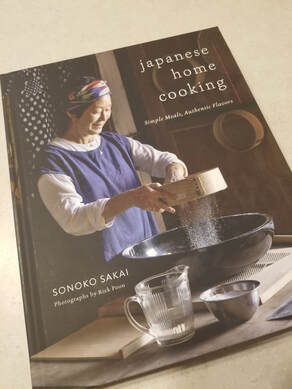 This month is the beginning of our rating system. You will find the actual ratings at the bottom of the article. Please let me know if this format works for you, or we can move them to the top. If you told me a month ago that my favorite bread recipe of all time would come out of a cookbook that I considered at first glance to be the book for a specialist, I might have laughed at you. Here we are, a month into Japanese Home Cooking by Sonoko Sakai, and I can safely say that Milk Bread may be my favorite type of bread in the history of baking. This is, of course, not a book devoted solely to the creation of milk bread, so we have to look at the whole before we consider how to score our first rated cookbook on Eating Normal. I’ll admit that I didn’t do a ton of actual cooking-cooking from this cookbook right out the gate. I used the milk bread and the dashi for my own concoctions rather than turning to a lot of the prepared recipes once I got past the kitchen essentials portion of the cookbook. That being said, I felt that I learned a lot from those very early portions of the book that I did not already know about Japanese cooking. This cookbook became a tome of knowledge for me instead of a recipe reference, really. I’ve always had a deep love for Japanese anything. My earliest memories of cartoons revolve around the Americanized Sailor Moon anime with all of those little life lessons tacked onto the end for little girls to make you forget that there were lesbians. I wanted bento boxes for lunch and sympathized greatly for the always hungry Usagi (AKA Serena, as I grew up calling her). It’s this love that intimidated me out of the more serious recipes within Sonoko Sakai’s cookbook. I was afraid to tarnish a memory. I was afraid to fail.
I think that will be a barrier for most home cooks when they consider a book like this. It’s well beyond the regular reading we might do while looking for a meal, quick or otherwise. It’s clearly titled, so we have at least an idea of what to expect when we peek inside. The unusual ingredients coupled with the sheer reverence that people of my generation have for this type of food can make us all hit the breaks. I wish I could say that I cooked a recipe from every portion of the cookbook and wandered bravely into the unknown, but I didn’t. Some of this is my own fault. Some of it is the fact that I’m a midwestern cook surrounded by midwestern supermarkets, and some of it is the fact our Asian Markets are decidedly Thai-leaning. I couldn’t get my hands on lotus root, yuzu, or ume plums. Taro roots and yam cakes aren’t something that anyone in my nearby vicinity would know how to find. I did manage to make a tonkatsu toward the end of my time with Japanese Home Cooking, and like any deep fried food, my husband and I loved it. The hardest part was actually the tonkatsu sauce which required me to make a fresh batch of dashi, and then assemble the sauce. Still, it’s likely another recipe that will stick around after this book has been shelved. That said, this is NOT a cookbook for someone who wants to be able to try every damn thing in the book. It’s much more of a book for the cook that likes to research. I found a lot of value in the earlier chapters of this cookbook for precisely that reason. I had no idea how to make dashi or what goes into it. I had no idea what milk bread was or that I’d fall in love with it as deeply as I did. The pantry ingredients that she teaches you to make early on have innumerable uses in any kitchen, and from this month forward, I will probably always have a container of Shoyu Tare in my refrigerator. Accessibility: 2 out of 5 The ingredients are difficult to find in most parts of the country, and with the current environment surrounding grocery stores and online shipping, it will be even harder. It is, however, an easy read with clear instructions that a curious cook will be able to follow. Difficulty: 2 out of 5 Most people in the United States do not have a lot of experience with this style of cooking, so there is definitely a learning curve when you crack the spine. Sonoko Sakai has a clear writing style that will help to guide you along the way, but a complete novice will find themselves lost from time to time. The ingredients likewise add a degree of difficulty since there are so many layers to the cooking. Originality: 5 out of 5 In this respect, I will highly recommend this cookbook. What you get here isn’t something you can get in an everyday cookbook. There is a lot to learn and a lot to do. You won’t find these recipes in a Pioneer Woman cookbook. It’s a wonderful addition to your shelf if you are looking for something different, but it is not for most home cooks.
0 Comments
Leave a Reply. |
The MissionAn idea born in Normal, Illinois, Eating Normal hopes to chronicle the eating Experiences of a Red bird. Pledge monthly to our patreon!
Or, you know, support the mission with caffeine! Buy me a coffee through Ko-Fi. Archives
May 2020
Categories
All
|
 RSS Feed
RSS Feed